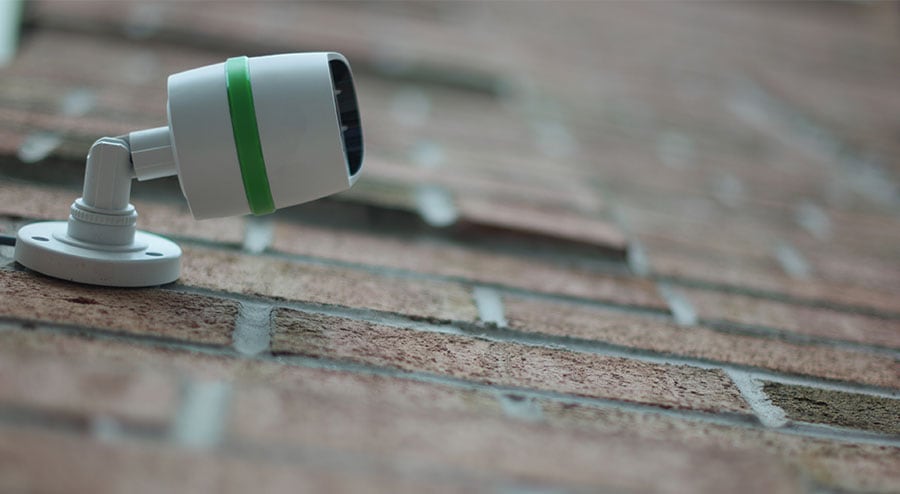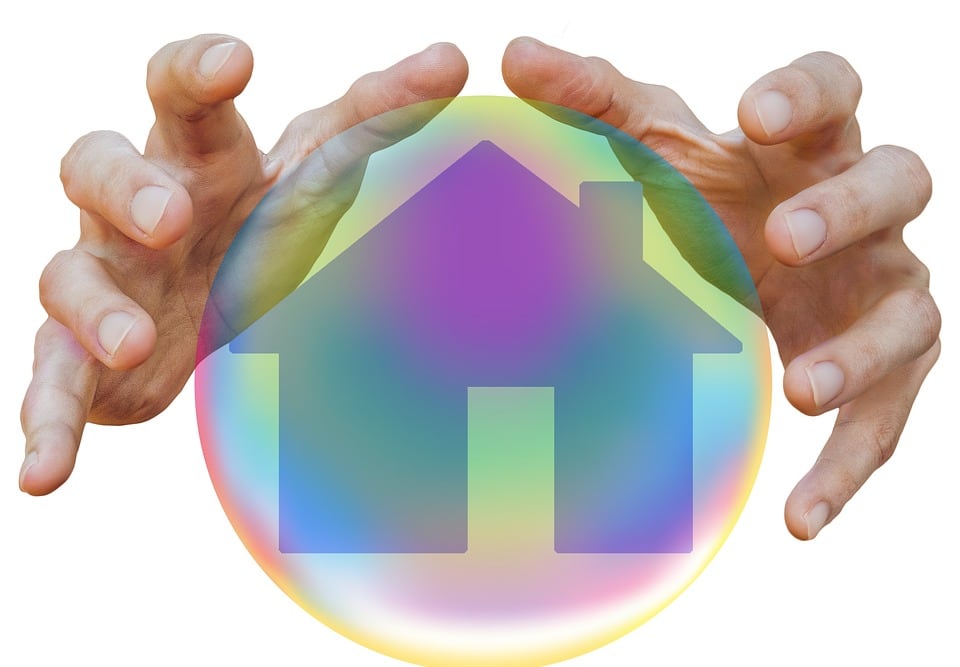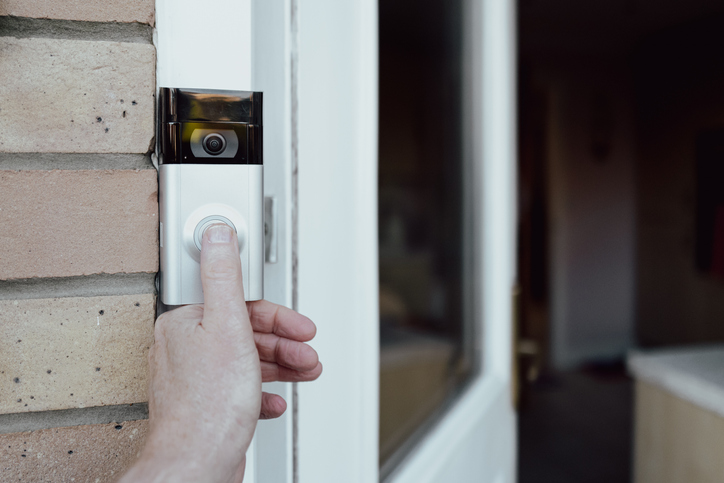In an ever-changing world, ensuring the safety and security of our homes has become a top priority. Indoor surveillance cameras have emerged as a popular and effective solution, allowing homeowners to monitor the inside of their homes remotely. These sophisticated devices offer a range of features, from basic monitoring to advanced smart functionalities, empowering homeowners to keep a watchful eye on their property and loved ones, even when they are away. In this article, we will explore the key benefits of using security cameras for indoor surveillance, their role in monitoring pets and young children, the different types available, and essential considerations for choosing the right camera for your home.

Overview Of Indoor Surveillance Cameras
Indoor surveillance cameras offer a myriad of advantages that significantly bolster home security. These sophisticated devices provide homeowners with a sense of safety and peace of mind, even when they are away from their property. One of the most evident benefits is the deterrent effect they have on potential intruders and burglars. The mere presence of visible indoor cameras signals that the property is under surveillance, discouraging criminals from attempting to breach the premises.
Table of Contents
- Overview Of Indoor Surveillance Cameras
- Types Of Security Cameras For Indoor Monitoring
- The Cost Of Indoor Surveillance
- Popular Brands Of Indoor Surveillance Cameras
- Monitoring Pets And Young Children With Indoor Security Cameras
- Choosing The Right Indoor Security Camera
- Audio Recording Capabilities And Legal Restrictions
- Data Storage Options
- Privacy And Legal Considerations
- Installation And Maintenance Of Indoor Cameras
- Indoor Surveillance Cameras And Insurance Claims And Investigations
- Conclusion
Beyond deterrence, indoor surveillance cameras offer the convenience of remote monitoring. With easy access through mobile apps or web portals, homeowners can keep a vigilant eye on their property from virtually anywhere. Whether at work, on vacation, or simply running errands, the ability to check on the home in real time provides reassurance and helps detect any unusual activities promptly.
Another significant advantage is the incorporation of motion detection and smart alert features in modern indoor cameras. These functionalities enable the cameras to send instant notifications to the homeowner’s device when motion is detected within the monitored area. Such real-time alerts empower homeowners to respond swiftly to any potential threats, giving them an opportunity to contact authorities or take appropriate action.
In unfortunate incidents like break-ins or theft, indoor surveillance cameras can serve as valuable evidence for law enforcement and insurance investigations. The recorded footage can help identify perpetrators and reconstruct events leading up to the incident. Additionally, some indoor camera systems offer professional monitoring services, where trained security experts keep a vigilant eye on the property. In case of any suspicious activity, these experts promptly alert authorities, further enhancing the level of security.
Types Of Security Cameras For Indoor Monitoring
Indoor surveillance cameras come in various types, each designed to cater to the specific needs and preferences of homeowners. Understanding the different options available can help individuals make informed decisions when choosing the ideal camera for their indoor security requirements.
Fixed cameras are a popular and cost-effective choice for indoor monitoring. These cameras have stationary lenses and are best suited for observing specific areas within the home, such as entryways, hallways, or rooms. They provide reliable surveillance and are relatively easy to install.
For those seeking greater flexibility in monitoring various areas of a room or larger indoor spaces, Pan-Tilt-Zoom (PTZ) cameras are an excellent option. These cameras can be remotely controlled, allowing users to pan the camera horizontally, tilt it vertically, and even zoom in to observe distant objects or details. PTZ cameras can cover a wide area and replace multiple fixed cameras, making them a preferred choice for comprehensive indoor surveillance.
360-degree cameras offer panoramic views, eliminating blind spots within a room or space. These cameras can capture a complete view of the surroundings, providing comprehensive coverage. They are particularly useful for monitoring large open areas or spaces where traditional cameras may not offer sufficient coverage.
For those seeking discreet surveillance, hidden or disguised cameras are available. These cameras are cleverly designed to blend into the environment and can resemble ordinary household objects like clocks, smoke detectors, or even plush toys. Hidden cameras are often used for covert surveillance when it is essential not to draw attention to the presence of cameras.
Smart indoor cameras are equipped with advanced features and capabilities. They may include motion and sound detection, facial recognition, two-way audio communication, and integration with smart home systems. Smart cameras can send real-time alerts to the homeowner’s device when unusual activity is detected, enhancing the effectiveness of indoor surveillance.
Wireless indoor cameras operate over Wi-Fi and provide flexibility in placement. They are an excellent choice for do-it-yourself (DIY) setups, as they eliminate the need for complex wiring. Wireless cameras can be easily moved to different locations within the home as needed, providing versatility in monitoring various areas.
When choosing indoor surveillance cameras for your home, carefully consider the specific features that align with your security needs. While high-end cameras offer advanced functionalities, such as facial recognition and cloud storage, more budget-friendly options with essential features can still provide effective monitoring.
The Cost Of Indoor Surveillance
Indoor surveillance systems vary in cost depending on factors such as the number of cameras, the type of cameras, additional features, and the brand. Below, we’ll delve into the typical cost range for cameras and installing an indoor surveillance system in a home and explore how indoor surveillance cameras can contribute to insurance claims and investigations. The cost of a surveillance system can vary significantly, ranging from budget-friendly options to more expensive, high-end solutions.
- Budget-Friendly Cameras (Price Range: $20 – $100): Budget-friendly indoor cameras are an economical choice for homeowners looking for basic monitoring without spending a fortune. These cameras typically offer essential features such as high-definition video quality, night vision, and motion detection.
- Mid-Range Cameras (Price Range: $100 – $300): Mid-range indoor cameras provide more advanced functionalities like pan-tilt-zoom (PTZ), two-way audio communication, and cloud storage options. They are suitable for those seeking enhanced monitoring capabilities and interaction with the camera’s surroundings.
- High-End Smart Cameras (Price Range: $300 – $500+): High-end smart cameras boast cutting-edge technology, including facial recognition, smart home integration, and premium build quality. These top-tier cameras are ideal for users who value advanced features and seamless integration with other smart devices.
Indoor Cameras
The price of indoor cameras varies depending on their features and capabilities. Basic fixed indoor cameras can be as affordable as $30 to $100 per camera. Mid-range cameras with advanced features like PTZ, motion tracking, and two-way audio may cost around $100 to $300 per camera. High-end smart cameras equipped with facial recognition and cloud storage options can range from $300 to $500 or more per camera.
NVR/DVR
Network Video Recorders (NVRs) or Digital Video Recorders (DVRs) are devices used to store and manage video footage from cameras. The cost of an NVR or DVR can range from $100 to $500, depending on the number of camera channels and storage capacity.
Storage
For cloud-based storage solutions, many manufacturers offer subscription plans based on the amount of storage required. Prices typically range from $5 to $30 per month, depending on the storage capacity. For local storage options, memory cards or external hard drives may be used, which can cost $20 to $100, depending on the storage capacity.
Additional Features
Some indoor cameras come with advanced features, such as motion detection, facial recognition, and smart home integration. Cameras with these capabilities may have a higher upfront cost, but they provide enhanced functionality and convenience.
Installation Costs
Installation costs can vary based on whether homeowners choose professional installation or opt for a do-it-yourself (DIY) setup. Professional installation may incur additional charges for labor, ranging from $100 to $500, depending on the complexity of the installation.
Popular Brands Of Indoor Surveillance Cameras
When it comes to indoor security cameras, a plethora of brands offer a diverse range of options, each showcasing unique features, and price points to cater to varying security needs and budgets.
Arlo
Arlo, a brand by NETGEAR, is renowned for its high-quality wireless indoor cameras. Their range includes various models with features like two-way audio, advanced motion detection, and cloud storage options. Prices for Arlo indoor cameras typically start at around $100 and can go up to $500 or more for their premium offerings.
Nest (by Google)
Nest indoor cameras, under the Google ecosystem, offer exceptional video quality, intelligent alerts, and seamless integration with other Nest products. Prices for Nest indoor cameras range from approximately $100 to $300+ depending on the model and features.
Ring
Ring is well-known for its comprehensive range of indoor cameras and smart doorbells. Their indoor cameras provide high-definition video, motion detection, and compatibility with other Ring products. Prices for Ring indoor cameras typically fall within the range of $100 to $300.
Wyze
Wyze has gained popularity for its affordable yet feature-rich indoor cameras. Despite their budget-friendly prices, Wyze cameras often come with impressive capabilities such as night vision, two-way audio, and mobile app access. Prices for Wyze indoor cameras usually range from $20 to $50.
Blink
Blink indoor cameras, also owned by Amazon, are known for their long battery life and easy installation. They offer motion detection, HD video quality, and cloud storage options. Prices for Blink indoor cameras typically range from $70 to $300.
Logitech
Logitech indoor cameras provide reliable performance and ease of use, with features like full HD resolution and wide-angle lenses. Prices for Logitech indoor cameras generally start at around $100 and can go up to $200 or more for their more advanced models.
Monitoring Pets And Young Children With Indoor Security Cameras
Indoor security cameras extend their utility beyond deterring intruders, as they play a vital role in ensuring the safety and well-being of pets and young children within the home. For pet owners, these cameras offer a valuable means of keeping a close eye on their beloved furry companions, providing reassurance when they are away. Through the live video feed accessible on mobile devices or computers, pet owners can observe their pets’ activities, ensuring they are safe, healthy, and not getting into any mischief.
Similarly, parents with young children find indoor surveillance cameras to be indispensable tools for maintaining a watchful eye on their kids, even when they are in different parts of the house or away at work. This added layer of supervision can help prevent accidents and ensure that children are not engaging in any unsafe activities or accessing restricted areas. Furthermore, parents can use cameras to observe how their children interact with caregivers or babysitters, ensuring that they receive proper care and attention.
For families employing nannies or babysitters, indoor cameras provide an extra level of security and reassurance. Parents can remotely monitor the interactions between their children and caregivers, fostering transparency and trust in the caregiving process. Should any concerns arise, parents can address them promptly, ensuring their children receive the best possible care.
Choosing The Right Indoor Security Camera
Choosing the right indoor security camera is crucial to ensuring optimal performance and meeting specific surveillance needs. With a wide range of options available, understanding the essential features and considerations is essential for making an informed decision.
Motion Tracking And Facial Recognition
Advanced indoor security cameras often come equipped with motion tracking and facial recognition capabilities. Motion tracking allows the camera to automatically follow moving objects within its field of view, ensuring that potential intruders or suspicious activities are continuously monitored. Facial recognition technology enhances security by identifying known faces and distinguishing them from unknown individuals. This feature can be valuable for tracking family members’ movements or identifying unauthorized access to the property.
Resolution And Image Quality
The resolution of the camera determines the clarity and sharpness of the video footage. Higher resolution cameras, such as 1080p or 4K, provide clearer images, making it easier to identify details and objects. Crisp image quality is especially crucial when trying to identify intruders or investigating incidents within the home.
Field Of View (FOV)
The FOV refers to the area that the camera can capture. A wide FOV is ideal for monitoring larger spaces, such as living rooms or open areas, while a narrower FOV may be more suitable for focusing on specific entry points or corridors.
Night Vision And Low-Light Performance
For effective indoor surveillance, consider cameras with night vision capabilities or infrared LEDs. These features enable the camera to record clear footage even in low-light or complete darkness scenarios, ensuring round-the-clock security.
Two-Way Audio
Indoor cameras with two-way audio allow homeowners to communicate with individuals within the camera’s range. This feature can be useful for interacting with family members, pets, or visitors, and it also serves as a deterrent for potential intruders when the homeowner can speak to them remotely.
Mobile App and Remote Access
Look for cameras that offer a user-friendly mobile app, allowing easy remote access to the camera’s live feed and recorded footage. With remote access, homeowners can check on their property at any time, receive real-time alerts, and manage camera settings from their smartphones or tablets.
Audio Recording Capabilities And Legal Restrictions
Audio recording capabilities in indoor security cameras can add another layer of information to surveillance footage. However, it’s crucial to be aware of the legal restrictions and privacy considerations associated with audio recording. Laws regarding audio recording vary by region, and in some places, it may be illegal to record audio without the consent of all parties involved. Before enabling audio recording on indoor cameras, homeowners should familiarize themselves with local regulations to ensure compliance and avoid potential legal issues.
Data Storage Options
When choosing the right indoor security camera for your home, one crucial aspect to consider is the data storage options available, which can significantly impact how you access, store, and manage your surveillance footage.
Cloud Storage Vs. Local Storage
Cloud storage involves storing camera footage and recordings on remote servers over the internet. This option provides the advantage of secure, off-site storage, which safeguards the data even if the camera is tampered with or damaged. Cloud storage often offers convenient access to footage from anywhere with an internet connection, typically through the camera manufacturer’s app or website. However, some cloud storage plans may involve subscription fees based on storage capacity.
Local storage stores camera footage on an onboard memory card or a Network-Attached Storage (NAS) device within the property. It provides homeowners with more control over their data, as they do not rely on a third-party service. Local storage is often a one-time investment with no recurring fees, making it a cost-effective option for long-term use. However, the downside is that if the camera is stolen or damaged, the recorded footage might be lost.
When choosing between cloud storage and local storage, homeowners should consider their budget, data security preferences, and how frequently they may need to access the footage remotely. A combination of both options may also be possible, depending on the camera’s features and compatibility.
Privacy And Legal Considerations
Maintaining privacy and adhering to legal regulations is paramount when implementing an indoor surveillance system. As indoor security cameras are deployed within the confines of a private residence, it becomes crucial to take necessary measures to safeguard the privacy of residents and ensure compliance with relevant laws.
Ensuring Privacy Of Indoor Surveillance Systems
The first line of defense in protecting the privacy of an indoor surveillance system is securing the camera feeds themselves. It is essential to change the default usernames and passwords that come with the cameras to unique, strong passwords. Using strong passwords reduces the risk of unauthorized access to the camera feeds by hackers or individuals with malicious intent.
Additionally, it is advisable to avoid using easily guessable passwords, such as “123456” or “password,” as these can compromise the entire security system. A combination of letters (both uppercase and lowercase), numbers, and special characters should be employed to create a robust and secure password.
Two-factor authentication (2FA) provides an additional layer of security to prevent unauthorized access. With 2FA enabled, a user must provide two forms of identification to log in – typically, something they know (like a password) and something they possess (such as a code sent to their mobile device). This ensures that even if a password is compromised, an additional step is required for access, making it more challenging for unauthorized individuals to breach the system.
Legal Considerations And Regulations For Installing Indoor Security Cameras
Installing indoor security cameras in private properties is generally within the rights of homeowners, as long as the cameras are placed in areas where there is a reasonable expectation of privacy. In many jurisdictions, it is legal to install cameras inside one’s own home, such as in living rooms, bedrooms, and other private spaces. It is essential to be aware of any regional or local regulations that may restrict the use of cameras in specific areas, such as bathrooms or areas where neighbors’ privacy may be compromised.
When it comes to recording in public areas, such as front yards or common areas in apartment buildings, the legalities may differ. Some areas may have specific restrictions or require signage to inform individuals of the presence of surveillance cameras.
Additionally, if homeowners employ indoor security cameras in a rental or vacation property, they should be transparent with tenants about the existence of the cameras and how the recorded footage will be used.
Installation And Maintenance Of Indoor Cameras
Installing indoor security cameras in the right locations and regularly maintaining them are crucial aspects of ensuring the effectiveness and longevity of the surveillance system. Proper installation and diligent maintenance contribute to optimized performance, accurate monitoring, and uninterrupted security coverage.
Guidelines For Optimal Placement Of Indoor Security Cameras
Strategically positioning indoor security cameras is crucial for maximizing their effectiveness in monitoring and safeguarding the home. When determining camera locations, it is essential to consider areas of potential vulnerability while respecting the privacy of the home’s occupants. Focus on entry points, such as doors and windows, as these are common points of interest for potential intruders. Placing cameras in high-traffic areas like hallways and staircases ensures comprehensive coverage of movements throughout the house.
While covering critical areas is important, it is equally vital to avoid placing cameras in private spaces like bedrooms and bathrooms to respect the privacy of residents. Homeowners should prioritize maintaining a sense of comfort and trust within the home while enhancing security.
The height and angles at which cameras are mounted play a significant role in their effectiveness. Ideally, cameras should be positioned at eye level or slightly above to capture clearer facial images, making it easier to identify individuals. Careful consideration of lighting conditions is also essential. Avoid placing cameras directly facing sources of bright light, as it can wash out the footage. Instead, position cameras to face areas with consistent lighting for more accurate recording.
For those seeking discreet surveillance, consider using hidden or disguised cameras that seamlessly blend into the environment. Disguised cameras can resemble ordinary household objects like clocks, plant pots, or even stuffed animals, making them inconspicuous and effective tools for covert monitoring.
Ensure proper cable management for wired cameras to avoid messy and exposed wires, which can compromise both the aesthetics and security of the setup. Thoughtful and strategic placement of indoor security cameras ensures comprehensive coverage of the home, providing homeowners with a powerful tool to monitor activities and enhance the overall safety and security of their living spaces.
Importance Of Regular Maintenance For Proper Functioning
Regular maintenance is a fundamental aspect of ensuring the seamless operation and longevity of indoor security cameras. By implementing routine maintenance practices, homeowners can significantly enhance the performance of their surveillance system and avoid potential disruptions. One crucial maintenance task is regular cleaning of camera lenses and housings to remove dust and dirt that may accumulate over time, preserving clear and high-quality video footage.
It is essential to periodically inspect and secure connections for wired cameras, as loose connections can lead to interruptions in video feeds or even complete camera malfunctions. Homeowners should conduct tests to ensure that all cameras are functioning as intended, reviewing recorded footage or accessing the live feed through the camera’s mobile app or web portal.
Keeping the camera’s firmware up to date is another critical maintenance practice. Regularly checking for firmware updates provided by the camera manufacturer ensures that the latest security patches and improvements are applied, reducing the risk of potential vulnerabilities.
Maintaining a stable power supply is vital for uninterrupted camera operation. Homeowners should regularly verify that cameras are receiving adequate power to prevent unexpected power disruptions that may lead to cameras going offline and creating blind spots in the surveillance coverage.
For cameras with local storage, it is crucial to manage storage capacity and ensure sufficient space is available to record new footage. In the case of cloud storage, homeowners should review their storage plans and consider upgrading if needed to accommodate growing data requirements.
Inspecting camera housings and mounts is essential to identify signs of wear or damage. Sturdy and secure mounting ensures that cameras remain in their desired positions and continue to provide optimal coverage.
Indoor Surveillance Cameras And Insurance Claims And Investigations
Indoor surveillance cameras can play a crucial role in insurance claims and investigations in case of incidents such as burglaries, thefts, or property damage. The recorded footage from indoor cameras serves as valuable evidence to substantiate insurance claims and aid law enforcement investigations. Insurance companies often rely on surveillance footage to verify the occurrence of an incident and assess the extent of damage or loss.
When filing an insurance claim, providing clear and high-quality video evidence can expedite the claims process and strengthen the case for reimbursement. Indoor cameras that capture the intruder’s face, their activities, or the moment of the incident can significantly increase the chances of a successful claim.
In investigations of crimes or suspicious activities, the footage from indoor cameras can assist law enforcement agencies in identifying suspects and gathering evidence for prosecution. The video evidence can be instrumental in locating and apprehending criminals and supporting legal proceedings.
However, it is crucial to note that for the recorded footage to be admissible as evidence, it must comply with legal regulations and chain-of-custody procedures. Homeowners should ensure that their surveillance system adheres to all privacy and legal considerations to maintain the integrity of the recorded evidence.
Conclusion
Security cameras for indoor surveillance provide homeowners with a powerful tool to monitor the inside of their homes, enhance safety, and deter potential intruders. These cameras offer a range of features, from basic monitoring to advanced smart functionalities, catering to diverse security requirements and budget considerations. With the ability to access live feeds remotely and store recorded footage, indoor surveillance cameras bring a sense of peace of mind, allowing homeowners to keep a vigilant eye on their property and loved ones even when they are away. It is crucial to balance security needs with privacy and legal considerations, ensuring the responsible and ethical use of indoor surveillance systems.




